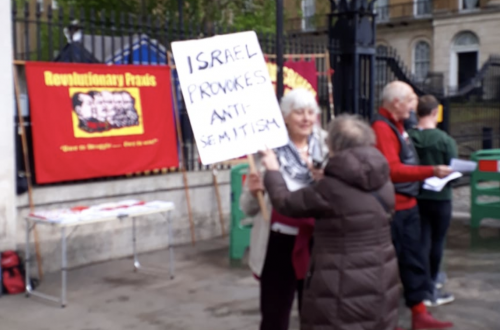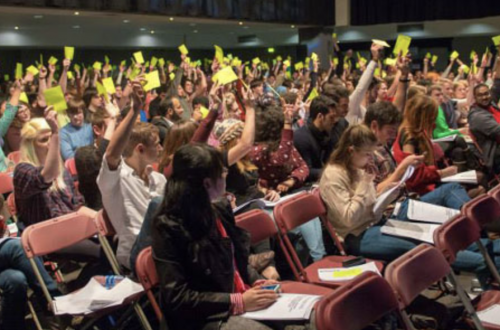This is a cross-post from Just Journalism.
The day after the double massacre in Norway, during which at least 93 people were killed in a shooting spree and bomb attack, Al Jazeera published an opinion piece by Ibrahim Hewitt. In ‘Norway, Islam and the threat of the West’, Hewitt, who is the senior editor at the pro-Hamas lobby group Middle East Monitor (MEMO), excoriates the West for hypocritically focusing on Islamic extremism while ignoring the threat of home-grown right-wing terrorists. However, instead of focusing on white supremacists, Hewitt highlights supposed Jewish terrorists in Israel – forcing Al Jazeera to publish a correction.
Hewitt opens by noting that, ‘of course, there was speculation that these two [attacks] were “Islamic-terror related”. He continues to argue that the media has sought to downplay any discussion of motivation now that it is clear that the perpetrator is not a Muslim, and is preparing the way for the attack to be dismissed as the act of a lone ‘madman’, rather than an ideologue driven by right-wing views and links to Christian fundamentalists.
He continues by then citing other examples of non-Islamic extremists who have had their ties to wider ideologies ‘dismissed as irrelevant’:
‘In 1969, for example, Denis Michael Rohan, an Australian Christian who set fire to Al-Aqsa Mosque in Jerusalem, was dismissed as a “madman” and sent for psychiatric treatment; end of story. The right-wing fundamentalists plotting to destroy the mosque, and the nearby Dome of the Rock, lived to fight another day.’
Given that the article is addressing the problem of contemporary right-wing terrorists, it is not immediately clear why Hewitt’s first example of this phenomenon would be an incident from over four decades ago. However, a correction at the end of the article reveals that the author initially considered Rohan to be ‘Jewish’:
‘An earlier version of this article incorrectly identified Denis Michael Rohan as Jewish. Our apologies for the error.’
Therefore, Hewitt’s first example of non-Islamic terrorism was intended to highlight attempts by Jewish extremists to allegedly destroy the third holiest site in Islam. Having set out an older example of right-wing extremism, Hewitt moves on to the current state of the neo-Nazi movement; and again, instead of discussing the situation in Europe, he discusses unnamed Jewish extremists in Israel:
‘Neo-Nazi immigrants from Eastern Europe have even been active in Israel where the government, while deploring such far-right activity in its midst is actually edging ever more to the far-right on a daily basis.’
Finally, he includes ‘the ethnic cleansing of Palestine’ alongside other historic by-products of ‘right-wing ideology’ – including the Holocaust and the slave trade:
‘Right-wing ideology was behind the Holocaust; it has been behind most anti-Semitism and other racism around the world; the notion of Europe’s and Europeans’ racial superiority – giving cultural credibility to the far-right – gave rise to the slave trade and the scramble for Africa leading to untold atrocities against “the Other”; ditto in the Middle and Far East. Ironically, it is also far-right Zionism – far from the socialist myths of Zionist pioneers in the 1930s and before – which has been behind the ethnic cleansing of Palestine throughout the 20th century, right up to today, as a specific policy to be pursued – by military means if necessary.’


